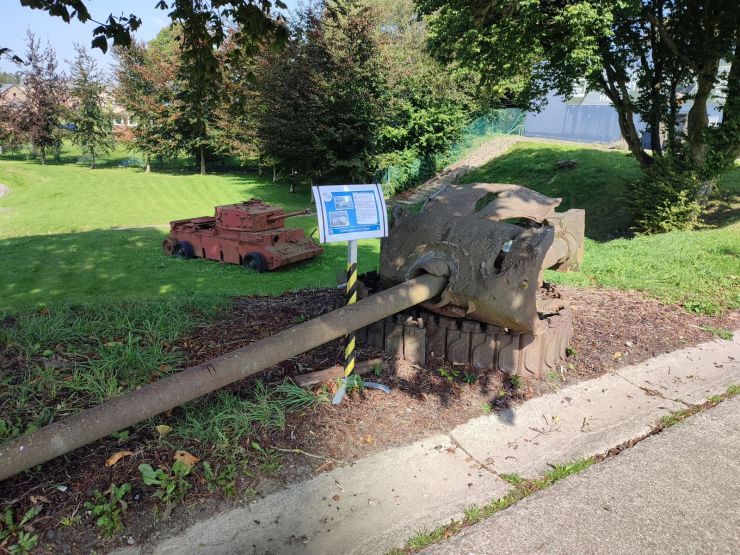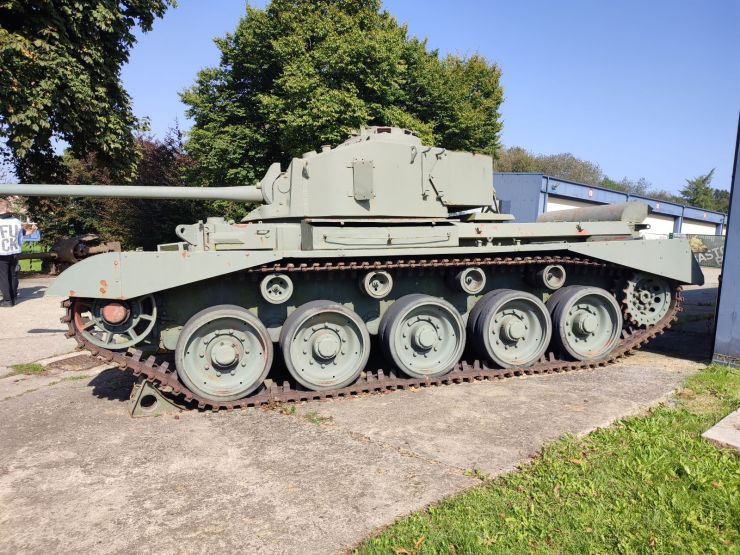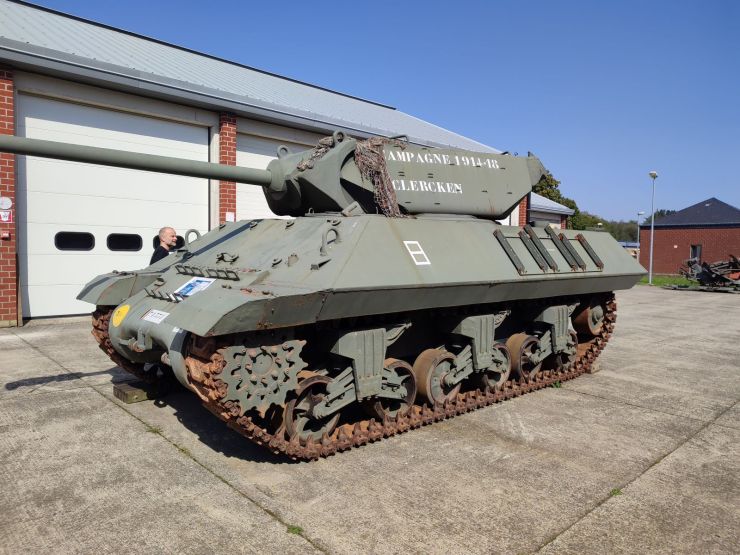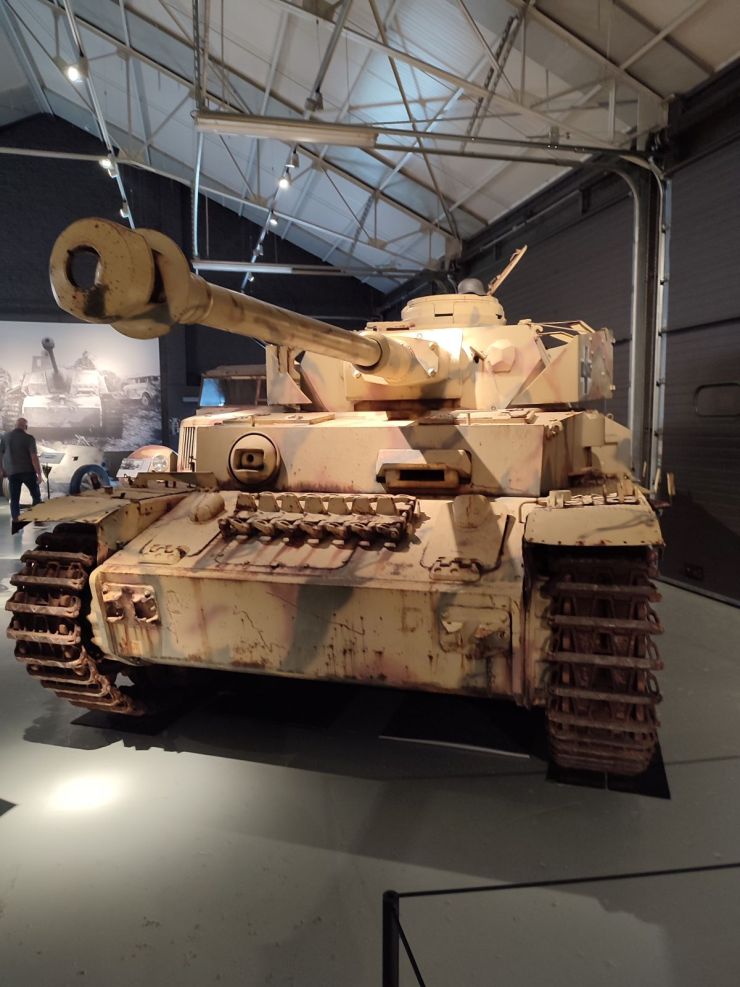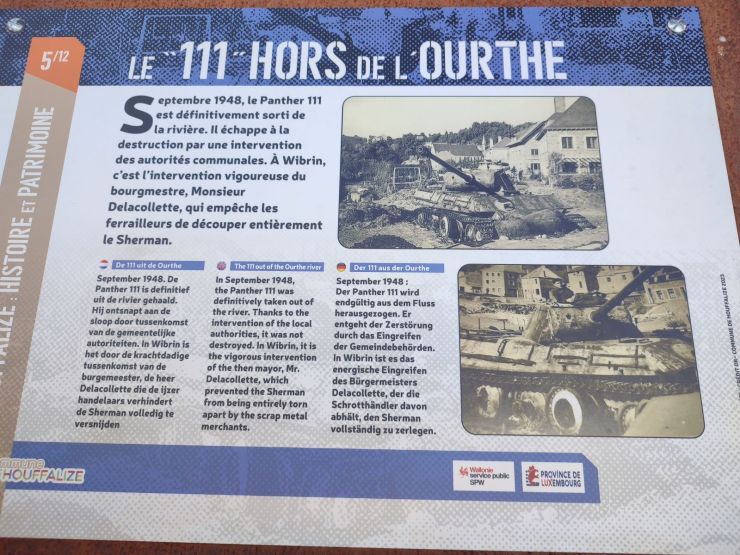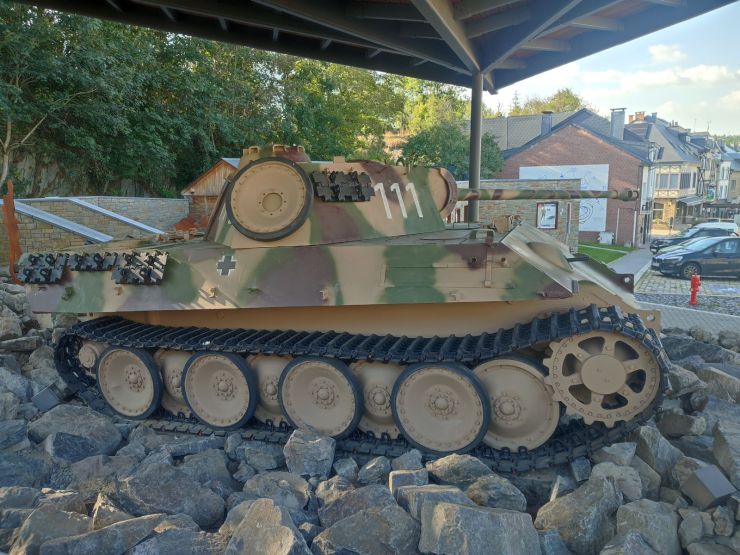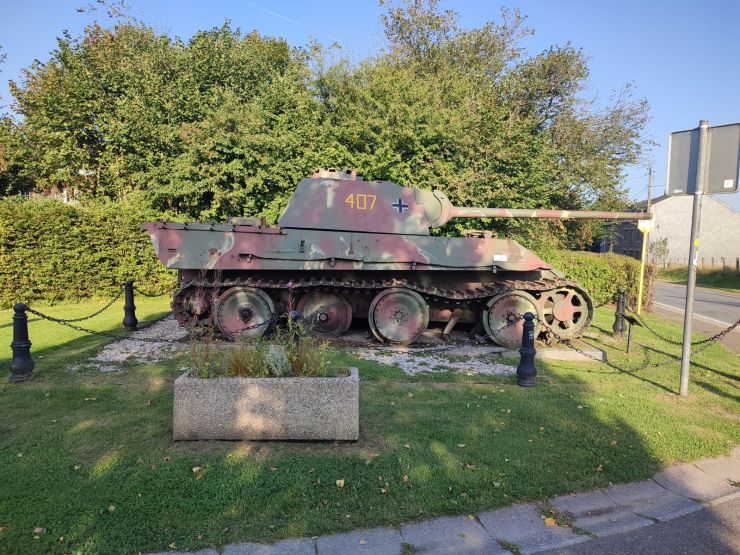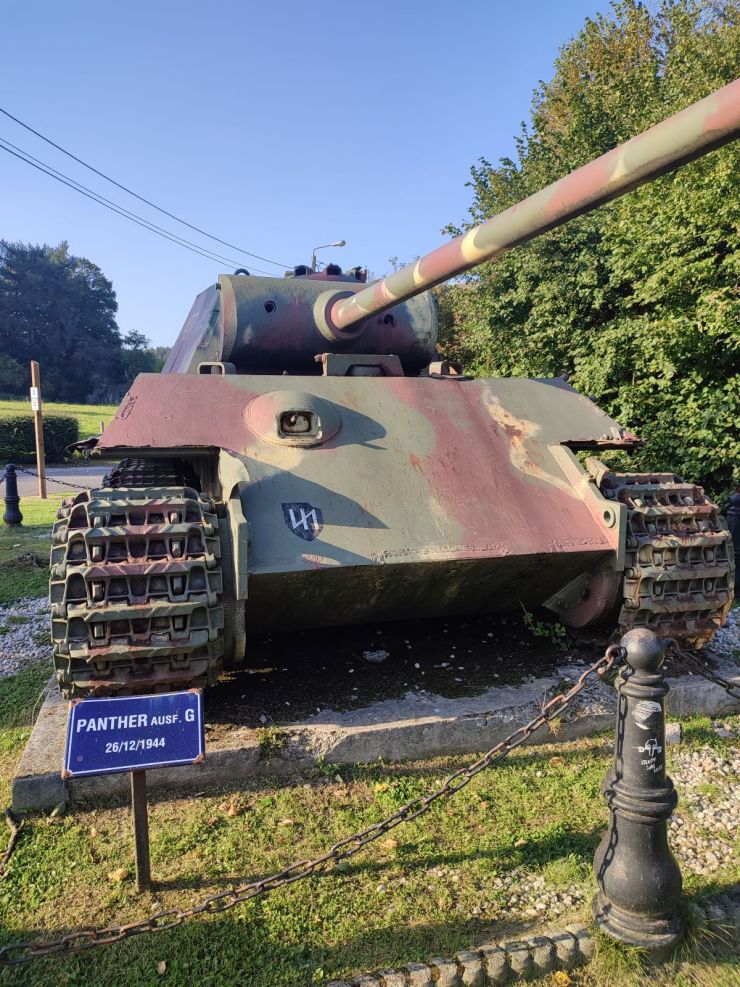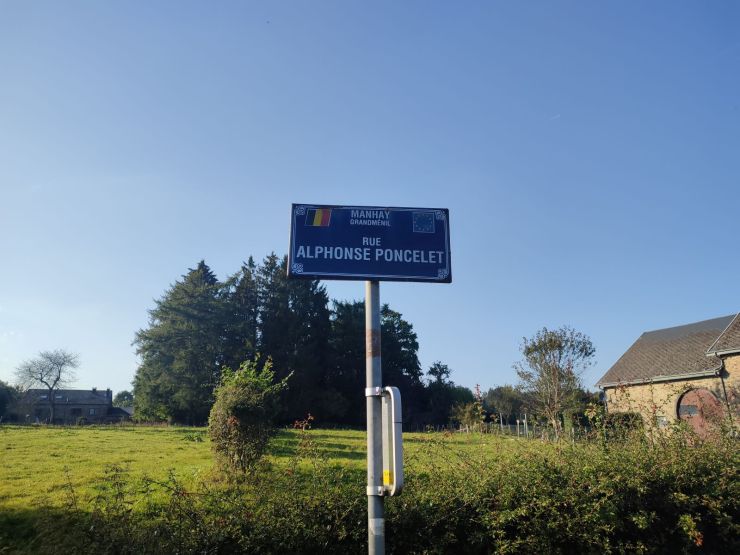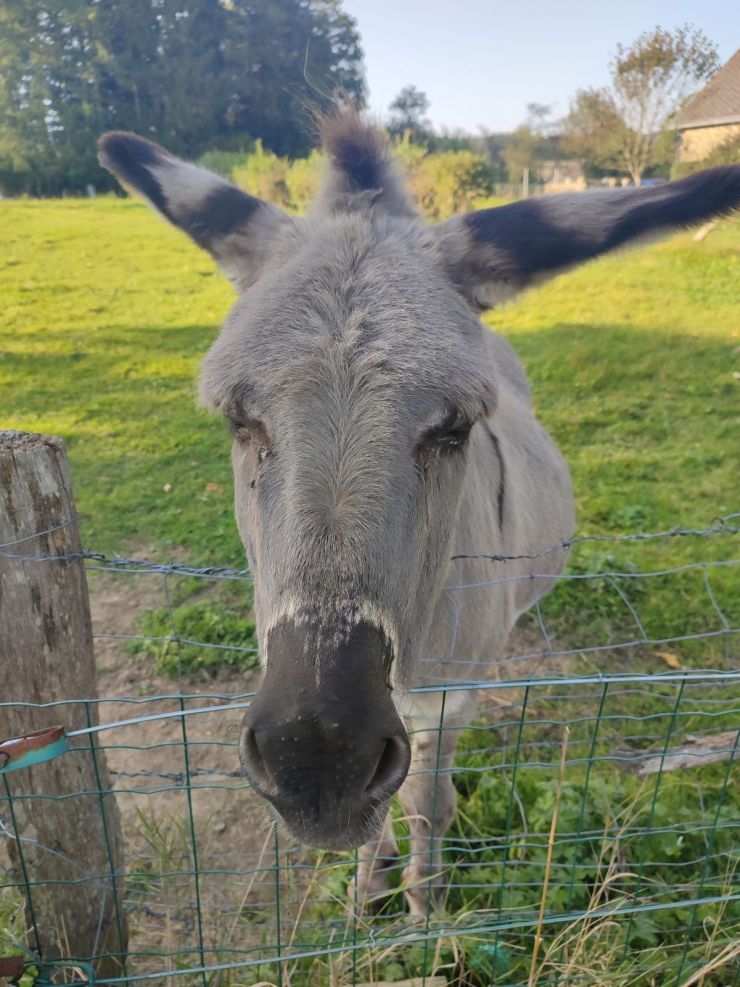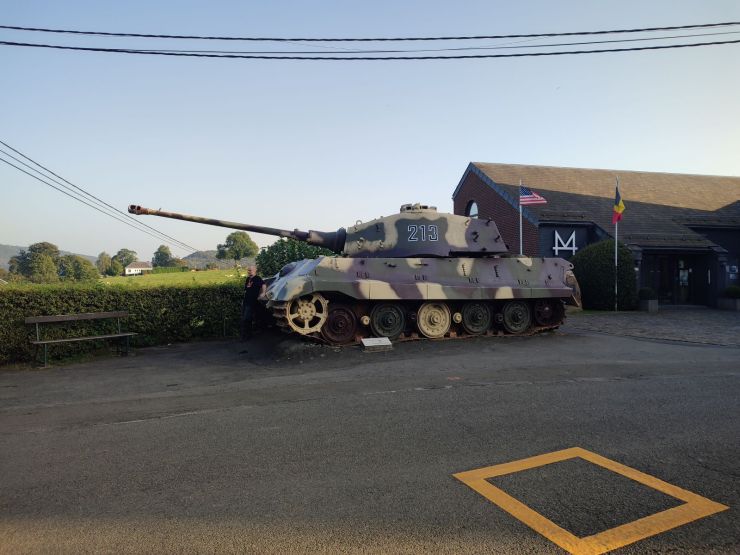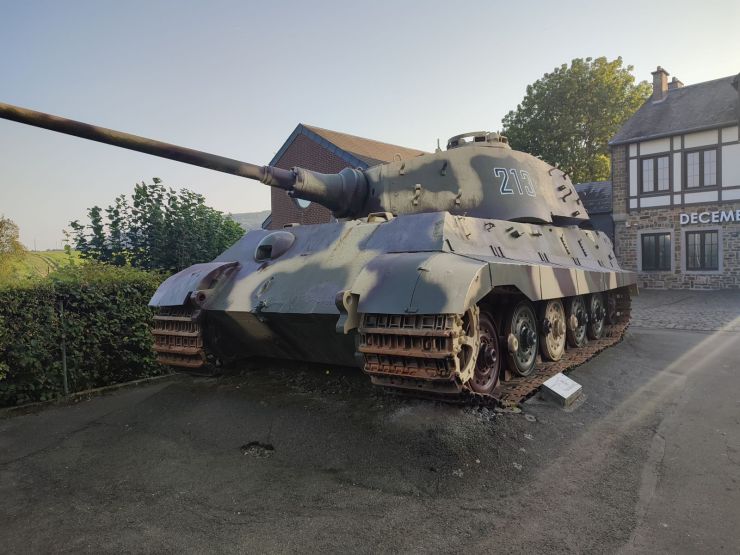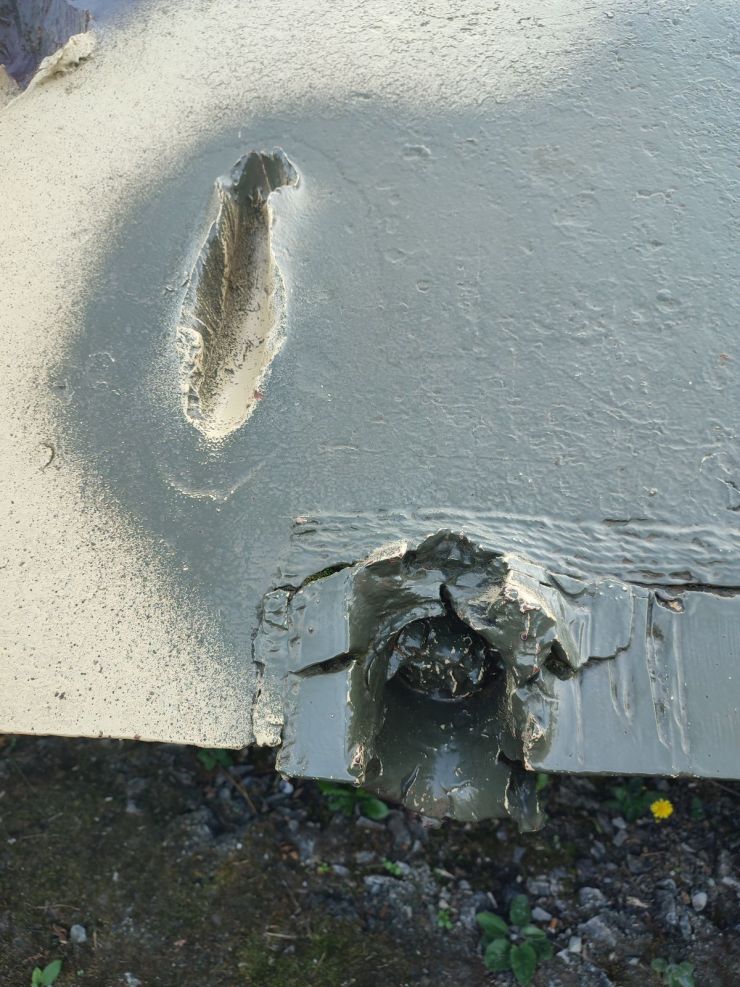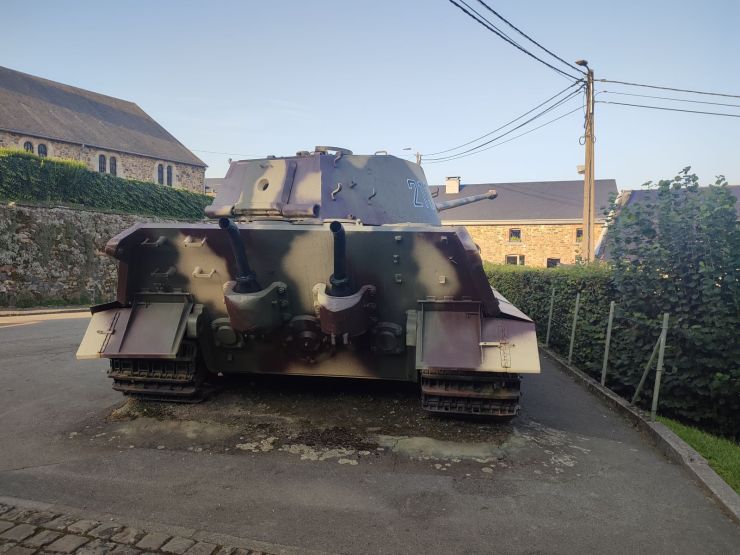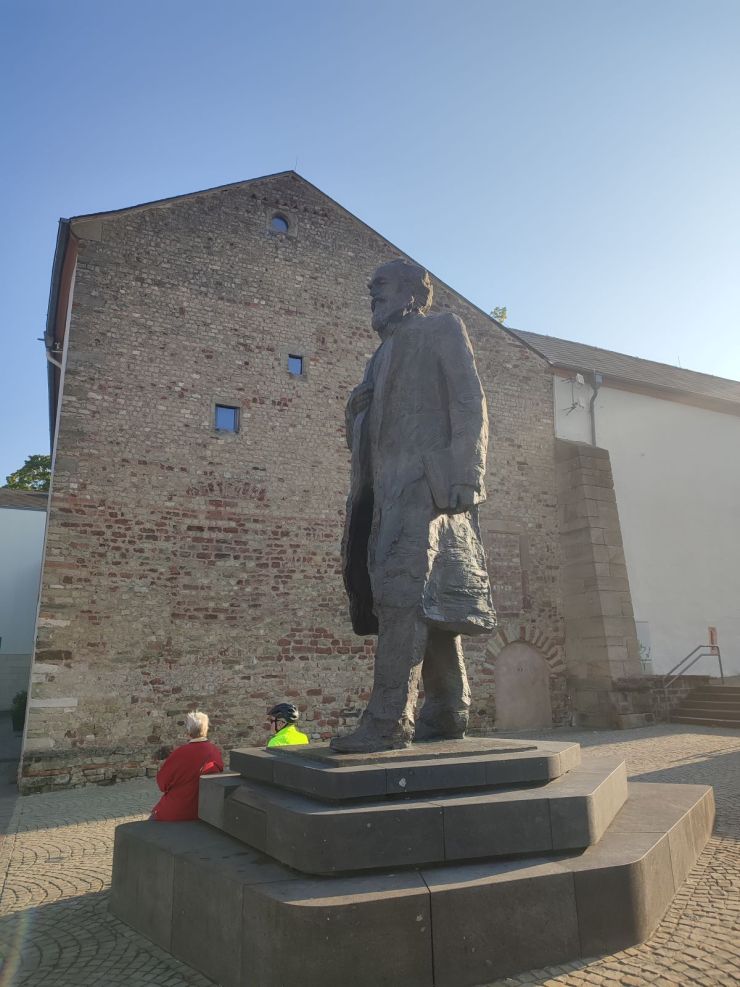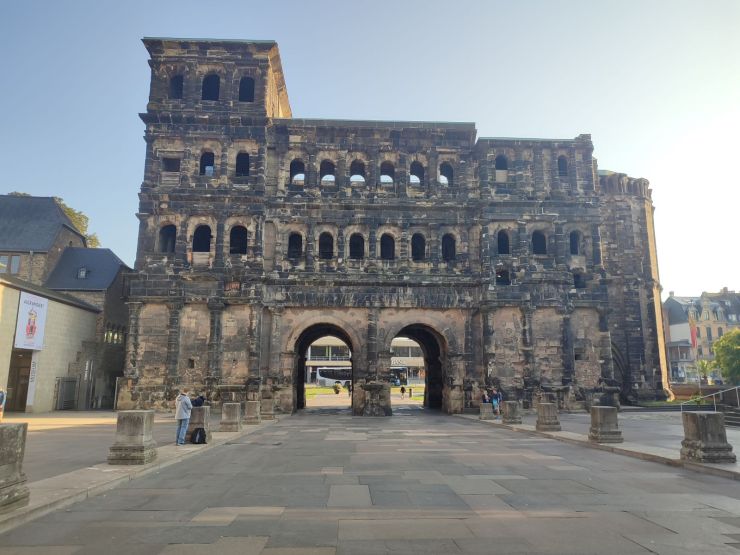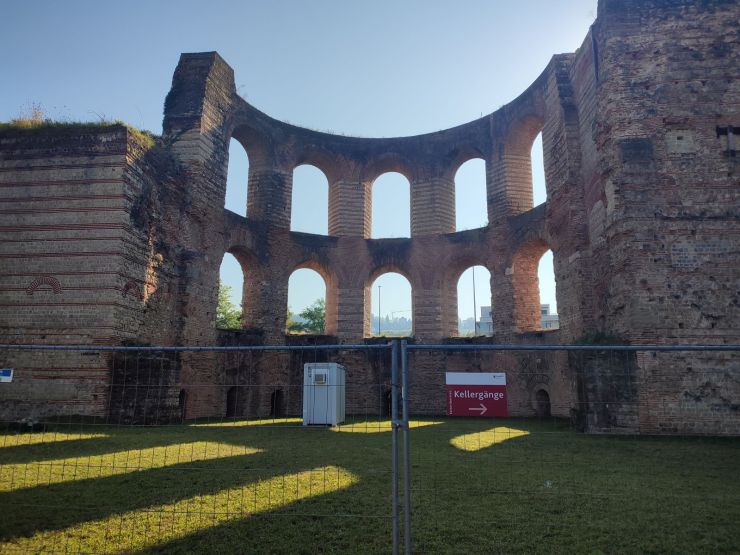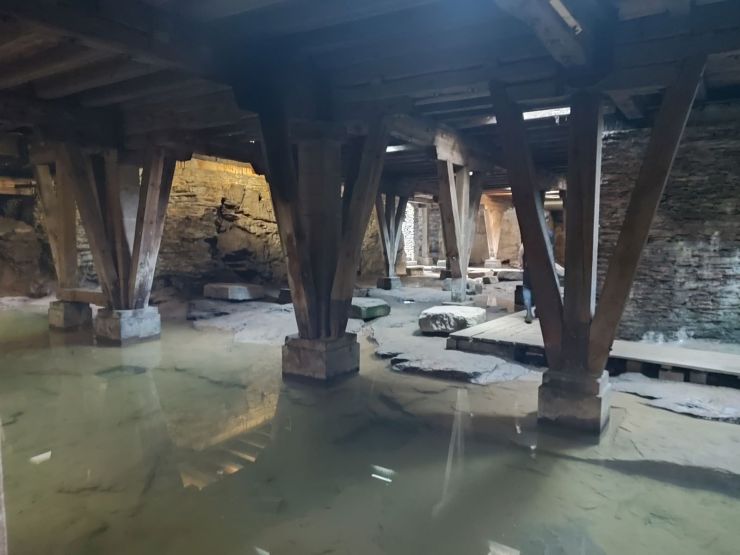At the beginning of last week, together with my friend Karel and his son Imek, we went on a 4-day weekend westwards. Our plan was to visit the Speyer Technical Museum, see part of the fortifications of the Maginot Line and stop in Bastogne.
The trip was somewhat complicated by a family situation where the day before we left my wife and all three children caught covid and started to sizzle, sniffle and alternately run a fever.
I faced the situation head on and ran away on the trip, I'd still catch it from them. My dear half saw me off with the words "go ahead, so I have the next three years to blame you".
Monday morning we set off for the Speyer Museum. It's pouring rain all the way across Germany.
After lunch the rain stops and we arrive at the site. There is no heavy military equipment in the Speyer Museum, no tanks or cannons, but there are many planes, locomotives, ships, historic cars, a Buran shuttle and a post-war submarine. The highlight is a Boeing 747 mounted on stands at height. A few kilometres away is another large museum, Sinsheim, which houses e.g. the Concorde, TU 144, heavy military equipment etc, but we were there two years ago so we're skipping it this time. I recommend a visit to the museum to all technology enthusiasts, you can easily spend the whole day there.
The next day we head to France to visit the fortifications of the Maginot Line. From the many forts we choose the one closest to our route and that is the
Schoenenbourg Artillery Fortress.
If anyone wants to go here, it's open from 2pm to 4pm, but you can stay inside until 6pm. Since we arrived at 12pm, we set off on foot through the forest to see what the fortress looks like from above. As we walk through the woods we find the remains of the cannons positioned on the surface and some buried shaft that served as an elevator during the construction of the fort. In the meadow behind the forest we see iron mushrooms for machine guns and extendable domes for cannons and mortars. I was expecting something more monumental, but the cannons are extendable and everything else is hidden deep underground.
On the way back to the parking lot we get a bit confused, but again in the woods we randomly find poles for attaching barbed wire and a couple of trenches for infantry.
The fortress is entered through a fortified so-called ammunition entrance, where we have about 130 steps to the basement. The underground of the fort is actually a buried city with its own railway, power station, small hospital, various branches everywhere to warehouses, quarters, kitchens etc. Then you go straight down a corridor for about 1.5 km to the combat section, where the machine gun turrets and retractable 75 mm guns and mortars are located. The fort is fully equipped, it was manned even after WW2. If I understood the briefing film correctly, the gun ejection and rotation is still functional. And back down that long corridor again. It's a bit claustrophobic for me. It's a good thing there's an elevator going up, my legs are kind of sore from backing up. We've been underground for about 3 hours, the temperature is 13 degrees. I didn't know these forts were fought over in the war, the Germans bypassed them but then went to see them anyway and fought over the fort for five days before surrendering. It had withstood cannon fire and air raids without a single casualty, the Germans didn't want to engage in an infantry assault.

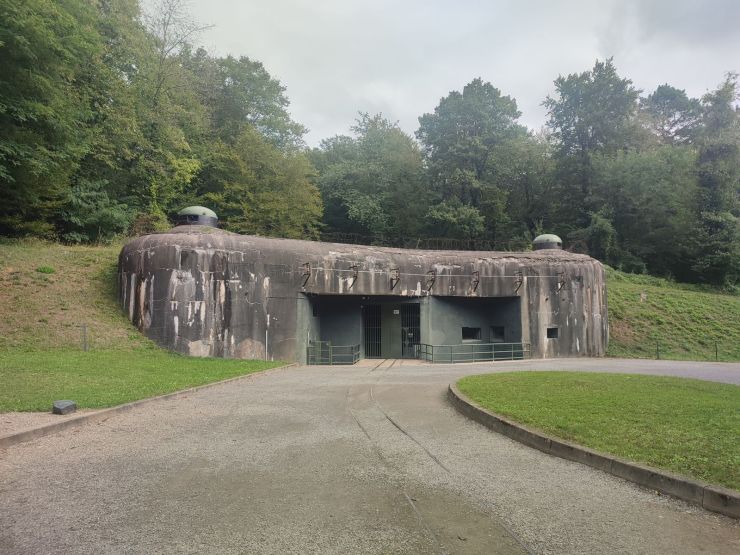
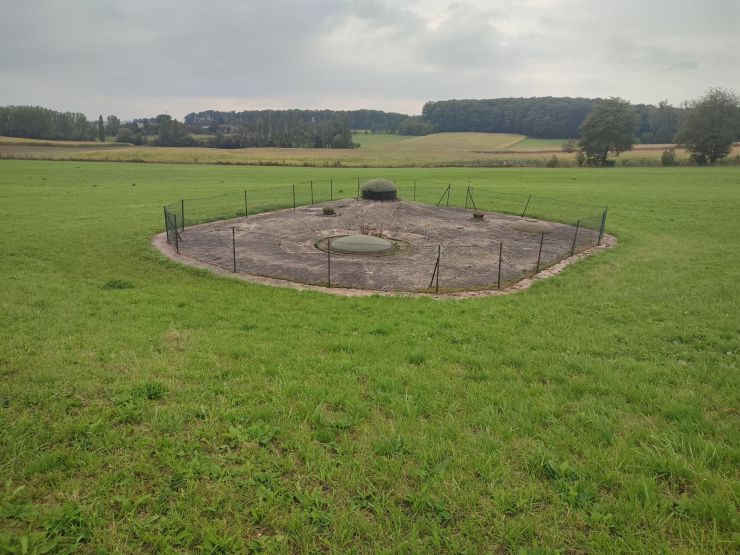

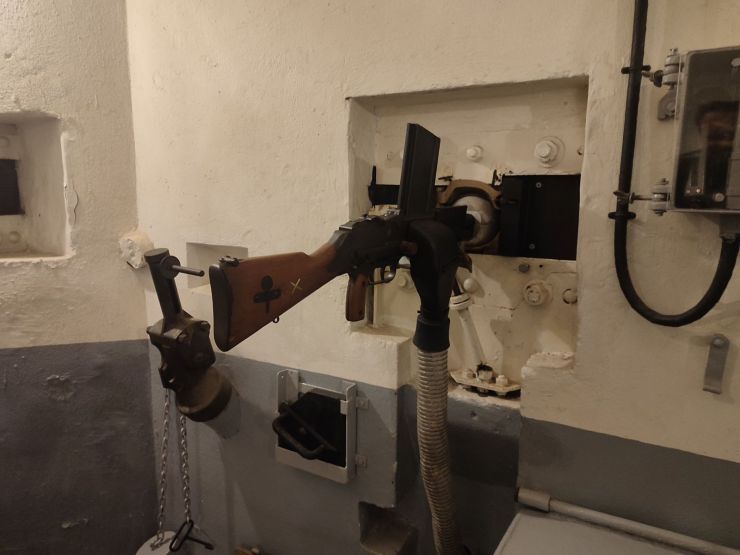
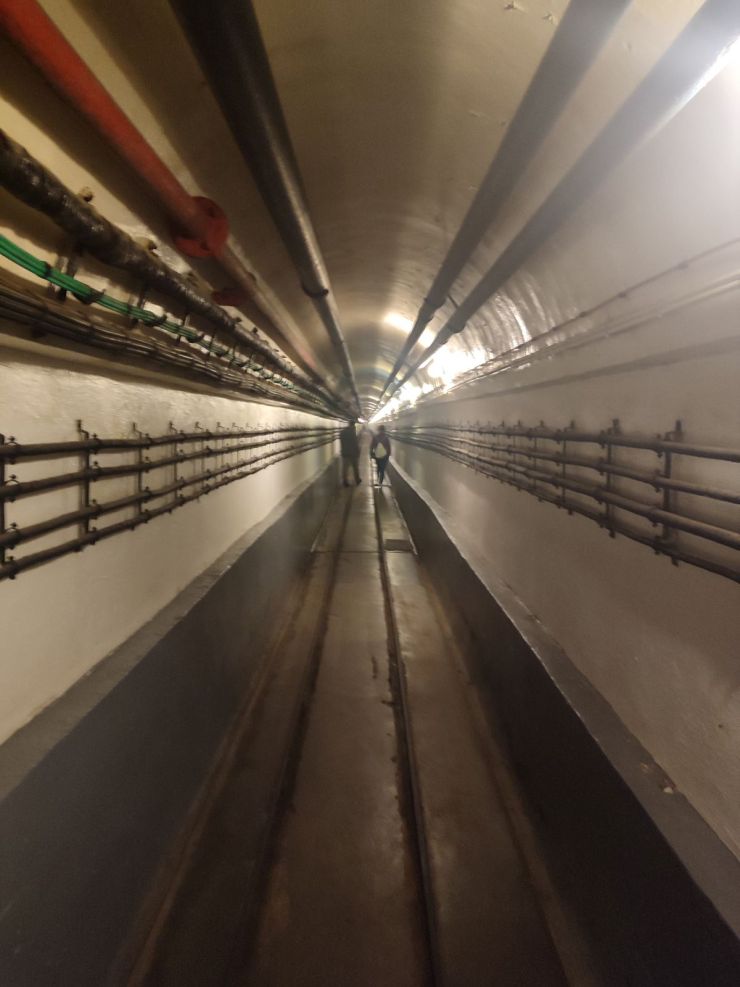
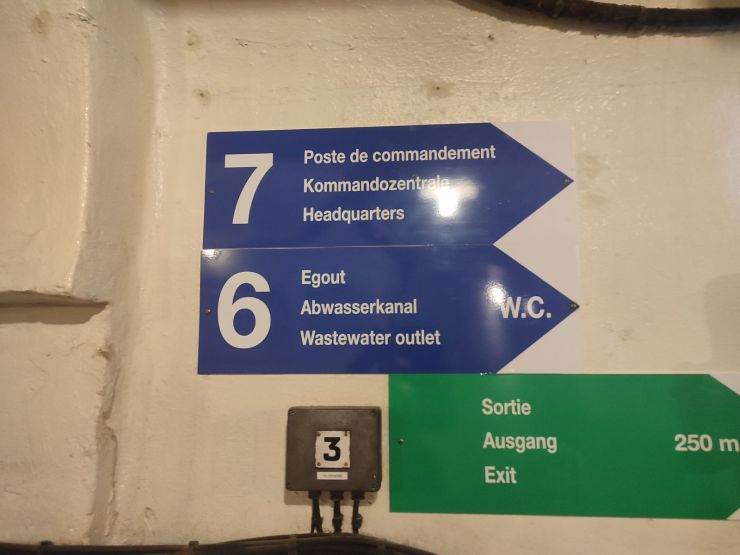

The next day, it is Wednesday, we go to Bastogne to check out the local museums and the battlefield of the "Battle of the Bulge".
Who is interested in war machinery, should definitely not miss the
Bastogne Museum Bastogne-barracks, where you can see a good amount of iron "scrap" in the outdoor exhibition and 3 halls 😊
Mostly allied machines, from the German equipment there are Hetzer, Stug III and Pz IV.
The museum is housed in a former Belgian army barracks, which also houses workshops for repairing equipment. So we could see how the top engine cover of a Sherman "First in Bastogne" tank is being split using a small crane of a Leopard engineer tank.
In the next area is another museum, the
Bastogne War Rooms, which focuses mainly on the 101st Airborne Division and its commander, Brigadier General McAuliffe.
You can never have enough museums, so we move about 2km out of town to the Bastogne War Museum, which has a few pieces of equipment, clouds of period artifacts, and about three screening rooms where they show war documentaries.I'll admit, we watched one documentary and just ran through the others, otherwise we would have been there by the end of the night.
(Bastogne war museum)
The museum is over and we're off to hunt tanks in the wild. Karel has planned a route for us around Bastogne and since we have seen enough Allied equipment, we will try to find the German one this time.
We find the first piece near Bastogne, in the town of Houffalize. It's a Panther of the 116th Panzer Division "Windhund". During the fighting at the end of December 1944, this tank fell off a bridge into the Ourthe River, killing the entire crew. They pulled it out of the river in 1948, buried the crew and left it in place as a memorial. The tank looks undamaged and has a new coat of paint. You can get within about three metres of it.
Next up is the Panther in the small village of Grandmenil. It's a tank of the 2nd SS Das Reich Panzer Division, left stranded in a field without fuel after fighting with the American 75th Infantry Division and the 3rd Armored Division. There is no visible battle damage, it has cut exhaust pipes, a couple of missing running wheels and a traction brake. I think it has its original paint.
At the end of our trip we kept the biggest piece, the Royal Tiger II.
It's tank number 213 and it's in the bend of a small village called La Gleize.It was part of the Kampfgruppe Peiper unit, it was the tank of SS-Unterscharführer Franz Faustmann's squad leader, but in his last battle it was commanded by Obersturmführer Helmut Dollinger. The village of Le Gleize is located on a hill and from where the tank stands you can clearly see the valley. In addition to Dollinger's tank 213, Tiger II 221, Untersturm-führer Georg Hantusch and Pz IV took part in the battle. During an attack by 15 Allied tanks, Helmut Dollinger's tank took a hit to the gun barrel and the crew took their feet on their shoulders.
A total of 135 pieces of German equipment of Kampfgruppe Peiper were abandoned in the vicinity of La Gleize due to lack of fuel. After the war, in June 1945, American troops were clearing the battlefield and a local citizen, Mrs. Jenny Geenen-Dewez, bought the tank from them for a bottle of cognac and placed it as a banner outside her café.
To make it look better, they got a different barrel from a wrecked Panther somewhere in the area and welded on the one that had been shot off. The tank shows several hits to the frontal armor, none of which went through. It's got a torn right belt, and the right side is shrapnel-encrusted. Otherwise, it's in nice condition and I have to say, up close, it really commands respect.
So that's enough, we wave 213 and head off to Trier to live. On Thursday morning, a tour of the city, the Roman baths, the square, a couple of churches and off home to my family.
Total mileage 1950 km, see you next year 😊









